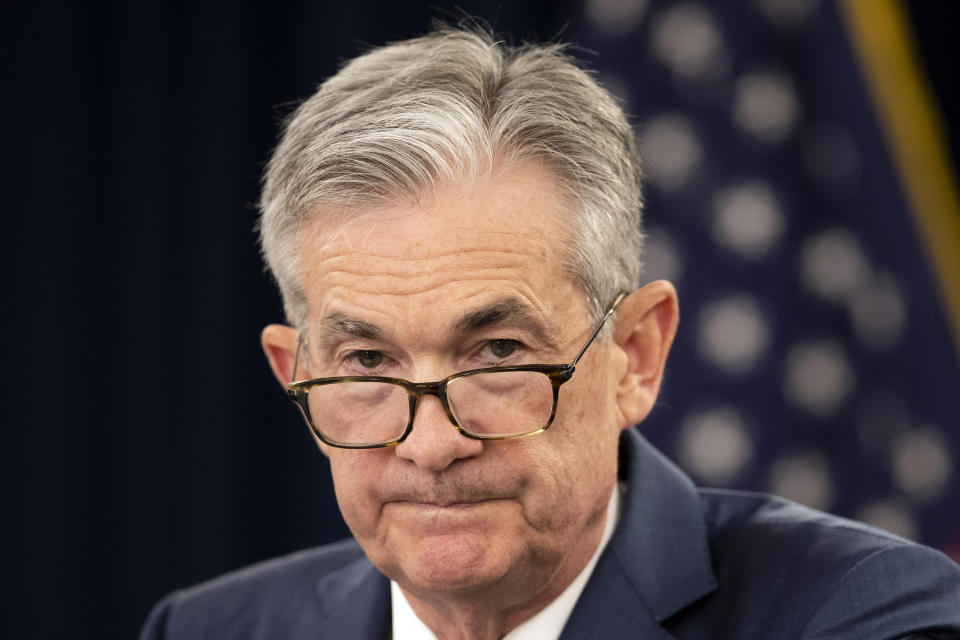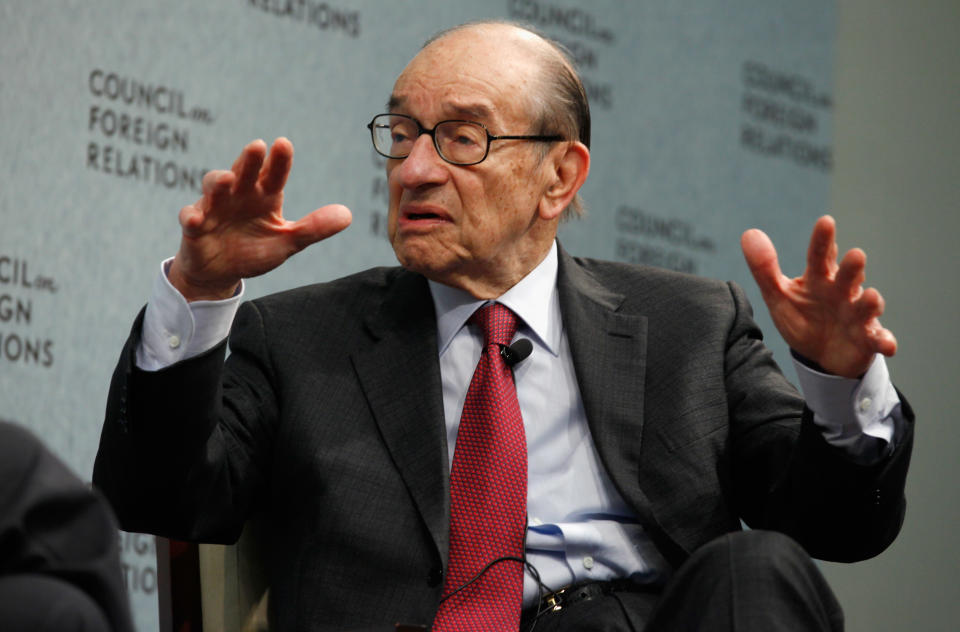Forget rate cuts, here's a better way to boost the economy
The Fed cut interest rates this week and the stock market yawned.
Which is what every Fed chair wants—even if the latest one, Jay Powell, hasn’t always been very good at it. That’s because the Fed tries to telegraph moves in advance so that when it announces a change in rates, the market has already anticipated it, resulting in nary a ripple.
On the other hand rate cuts should have some sort of an effect, right? Otherwise why do them?
If the Fed isn’t in the business of jacking up the stock market, it is about supporting what’s called the real economy, i.e. businesses and consumers who would react to lower rates by borrowing money to invest or buy and therefore boosting the economy.
To be sure, you can’t expect an immediate or even sizable response from the real economy especially with rates so low. For instance, consumers won’t see a drop in their adjustable rate mortgages and home equity loan payments for a month or two—if they see one at all.
And yet many of us are obsessed with interest rate cuts (and hikes for that matter, which the Fed implements to cool an overheating economy), as if these moves are omnipotent decrees that could countervail any economic maelstrom and extend expansions indefinitely.
By extension, the world’s central bankers—the Fed chair and his cohort around the globe, (the ones who issue those decrees), have been cast as high priests, in full command of our economic destiny. Followers of this narrative are like a cult.
Which is to say that believing in all this is voodoo. And by definition dangerous. I like what market observer and Fed skeptic Jim Grant told CNBC not long ago: “I think the central banks are busy chipping away at the unwarranted faith in their pretense.”
Preach, Jim.

‘What will a rate cut do for the economy? In my view, not much’
Except I say the problem isn’t so much the bankers, it’s the believers. Too many policymakers think our economic difficulties can be solved by managing interest rates — specifically now by cutting them. They can’t. Central bankers have cut rates to the bone, to the point where they’ve gone negative in many parts of the world. And still growth is moribund and/or slowing. Yes, cutting rates can spur growth, but we’ve already gone so low that responses are now extremely limited.
Peter Costello, former Treasurer of Australia, (the equivalent of our Treasury Secretary) addressed this at our All Markets Summit in Sydney in October: “What will a rate cut do for the economy? In my view, not much. Every rate cut brings a little less of a return than the one before.”
Costello explains: “We've already got a cash rate of 1%. Suppose it goes to 0.75. Are all these people that are holding off spending or borrowing or investing it, will say I wouldn't have done it at 1% but I'm going out there now that it's 0.75? I don't think so. It's what we call the law of diminishing returns.”
It’s worth noting that rate cuts potentially exacerbate economic disparity as well. “Lower rates boost asset prices so they help stock prices, help bond prices, help real estate prices,” says Joseph Gagnon, an economist at the Peterson Institute for International Economics and formerly of the Fed.
So, how the heck did we get into this mess?
Flash back to 20 years ago. That’s when the cult of the central banker probably began — during the Clinton administration in 1999, with a Time cover story titled, “The Committee to Save the World,” which pictured Larry Summers, Deputy Treasury Secretary, Treasury Secretary Bob Rubin and Fed Chair Alan Greenspan (squarely in the front.) The piece was a paean describing how the three were able to mitigate all manner of national and global economic crisis simply by pushing a few buttons in Washington D.C.
Greenspan benefited the most from this hagiography, as he stayed atop the Fed until 2006, (while Summers and Rubin decamped much sooner.) You may recall this period following the dot-com crash became a boom time, made that much more comfortable with Greenspan at the helm, then universally accepted as in full control of the good ship U.S. economy.
Until it became apparent shortly thereafter that he wasn’t.
Two years after Greenspan left the Fed, the economy sank into the Great Recession, the worst economic downturn since the 1930s. Greenspan neither saw it coming nor did his tools or strategies prevent it from worsening once it was observed. (Furthermore, some of the deregulatory policies he supported contributed to the collapse.)

‘We know that monetary policy tool is losing its potency’
It’s been 10 years now since the depths of 2009, and we’ve come a long way. Unemployment, at 3.6%, is at a multi-decade low and the stock market is at a record high. Yet economic growth—the most recent reading for the third quarter was 1.9%—remains stubbornly low. And there are signs it will slow further.
Which is why the Fed is cutting rates, to preemptively stop the economy from weakening and to help power it up again.
Except that it won’t work. “We know that monetary policy tool is losing its potency,” says Shweta Singh, managing director of global macro at TS Lombard. “Central banks globally...are pushing on a piece of string.”
Funny you should invoke that particular metaphor, Shweta, because it’s highly salient.
Some attribute the phrase ‘pushing on a string’ to economist John Maynard Keynes, though there is no record of him using those words. Investopedia says that “this exact metaphor was used in a House Committee on Banking and Currency in 1935, when Federal Reserve Governor Marriner Eccles told Congress that there was very little, if anything, that the Fed might do to stimulate the economy and end the Great Depression.”
Governor Eccles: ...one cannot push a string. We are in the depths of a depression and…, beyond creating an easy money situation through reduction of discount rates and through the creation of excess reserves, there is very little, if anything that the reserve organization can do toward bringing about recovery.
Be advised. While we aren’t in any sort of recession, never mind a Great Recession or Depression for that matter, I am becoming increasingly convinced that the way out of our pickle is to abandon our unflagging reliance on the Fed—what it employs is called monetary policy—and look to another tried and true source of growth, spending and building out infrastructure and other large scale programs—which is called fiscal policy.
And in fact that’s what we did to resolve Eccles’s dilemma. After Franklin Roosevelt took office in 1933, the government implemented massive programs like the Public Works Administration and Civilian Conservation Corps to build bridges, dams and roads. FDR also provided major sources of capital to the private sector such as railroads and industry. The total cost? Some $47.1 billion in 1935 dollars, worth $780 billion today. It doesn’t seem like that much, but remember the U.S. is much bigger today. That $47 billion amounted to a per capita spend of $5,231 back in the 1930s and was the equivalent of 40% of the nation’s GDP in 1929. Again, we’re not anywhere near those dire times. But I am saying for stimulus to be effective we’d need to invest a pretty penny.
By the way, there’s another intriguing, non-historical paradigm of fiscal policy, that being China.
Getting hard numbers on China’s infrastructure spending over the past decade is tough, but it’s clearly at New Deal dollar levels. For instance the South China Morning Post calculated the Chinese government has approved 21 projects, worth at least 764.3 billion yuan (US $107.8 billion) this year. That includes a high-speed rail in southwest China, a new airport in Sichuan province and an expanded urban rail transit network in Zhengzhou. Yes, the Chinese have stepped up fiscal stimulus because they too are combatting sluggish growth, but this has been their M.O. for years.

‘Some countries are phobic about fiscal stimulus’
As for interest rates in China, quick, what’s the benchmark interest rate in China? Most of us don’t know—certainly not like we know rates in the U.S. or even Europe or Japan—because rate management, while not unimportant, is less prominent in China. (For the record China’s [one year] Loan Prime Rate is 4.2%, way higher than 1.59% for a one-year U.S. Treasury note.) Sure there are all kinds of other factors at play in China, but broad-brush, this is an economy that relies more on fiscal policy than monetary measures.
Before you call me a card-carrying member of the Chinese Communist Party or even a screaming big government New Dealer, hear me out. In no way am I espousing that we become China, nor am I suggesting we need to approach New Deal spending levels. I am saying however that we should look hard at both China’s policies and the New Deal and begin to set programs in motion, particularly public/private partnerships that would stimulate the economy.
A few super important points I neglected to mention. Number one: There of course are all kinds of benefits that accrue from massive infrastructure projects, like from the now not-so-new Denver Airport, (opened in 1995, the last major airport built in the U.S.) which generates some $26 billion in economic activity annually for Colorado, or the massive private Hudson Yards project in New York City. And number two: Fiscal stimulus projects can also be new economy endeavors like Internet and 5G build outs and space exploration. Again, think public/private partnerships. (NB: Tax cuts, which of course we just had, are also a type of fiscal stimulus.)
Some at least see the need to change our focus. “There's widespread agreement among economists that we have been relying too heavily on monetary policy and insufficiently on fiscal policy for macroeconomic support,” says Barry Eichengreen, an economist at the University of California, Berkeley. “The reason we've been relying inadequately on fiscal policy is that some countries are phobic about fiscal stimulus (Germany) while others are suffering from fiscal deadlock (the United States).”
Ah yes, Washington deadlock, or gridlock. A few reasons for that, (besides the fact that politicians seem naturally inclined to fight and grandstand rather than get anything done.) First, heretofore we haven’t been in a position where we’ve had to do big infrastructure projects for stimulus (since the 1930s that is), and second, to the extent projects have been put on the table they’ve been blocked by red state lawmakers blocking blue state projects, or even held up in red-blue intrastate scrums. I don’t know how to end this, except to say that when things get urgent enough, it will.
For now though, it seems like we’ll have to rely on Jay Powell and his ability to manage interest rates. Believers think he’s got the world on a string. Me, I think he’s pushing on one.
Andy Serwer is editor-in-chief of Yahoo Finance. Follow him on Twitter: @serwer.
This article was featured in the Saturday edition of the Morning Brief on November 2, 2019. Get the Morning Brief sent directly to your inbox every Monday to Friday by 6:30 a.m. ET. Subscribe
Read more:
Facebook's Zuckerberg and Sandberg are this involved with the company's content issues
Negative interest rates are coming and they are downright terrifying
Follow Yahoo Finance on Twitter, Facebook, Instagram, Flipboard, SmartNews, LinkedIn, YouTube, and reddit.

 Yahoo Finance
Yahoo Finance 